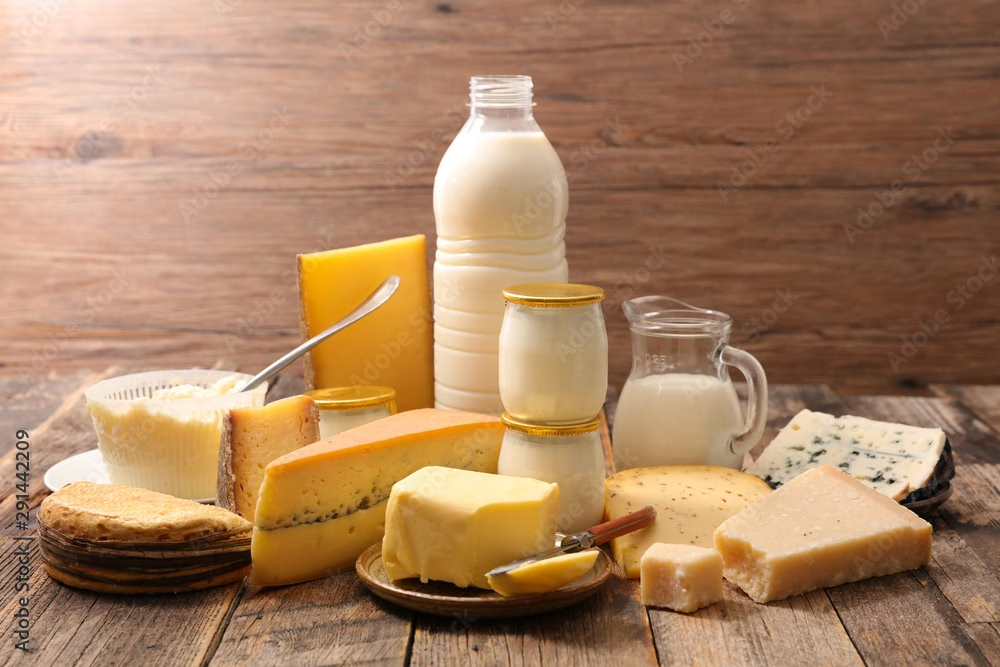Find out why butter prices are skyrocketing and how it affects your dairy farm. Ready for global market changes? Learn how to stay ahead.
Summary: Oceania’s butter prices are surging, and it’s crucial for dairy farmers to understand the reasons and implications. The global butter market varies across regions, which means farmers need to adopt strategies like diversifying products, improving efficiency, and exploring new markets. The future of butter prices is uncertain, so a proactive approach is vital for stability and profitability in the dairy industry. This quarter saw a 20% rise in Oceania’s butter prices, stressing the importance of staying informed. Factors like international demand, climate affecting milk production, and changing consumption patterns are driving prices up. While Europe remains steady, North America’s market is fluctuating due to shifts in consumer preferences and production variabilities. For dairy farmers in Oceania, this could mean higher income but also increased production costs. Monitoring market trends and maintaining efficient practices are key. The global butter market’s unpredictability affects regions differently. To navigate this, dairy farmers should diversify products, invest in advanced management tools, and explore new markets, including exports, local farmers’ markets, and online direct-to-consumer platforms.
- Oceania is experiencing a significant 20% rise in butter prices this quarter.
- Farmers need to understand and adapt to global market variations to remain profitable.
- Strategy recommendations include diversifying product offerings, improving operational efficiency, and exploring new markets.
- Future butter prices are uncertain, necessitating a proactive and informed approach for stability.
- Increased international demand, climate impacts on milk production, and changing consumption patterns are key drivers of the price surge.
- Europe’s butter market remains stable, while North America’s market is marked by fluctuations.
- Oceania’s farmers may see higher income but also face rising production costs due to market dynamics.
- Exploring exports, local farmers’ markets, and online sales can help farmers navigate market unpredictability.

Butter prices play an essential part in setting global markets in the ever-changing dairy business, and the recent 20% increase in Oceania’s butter pricing this quarter has left many dairy producers trying to grasp the long-term ramifications. This spike is more than just a statistic; it’s a call to action driven by factors such as shifts in international demand, climatic conditions affecting milk production, and changing consumption patterns. It emphasizes the critical need for farmers to stay informed and proactive to ensure long-term growth and competitiveness.
Global Butter Market: Why Oceania’s Price Surge Could Change Everything!
Examining the present global butter market landscape reveals diverse patterns in significant areas such as Oceania, Europe, and North America.
| Month | Price (USD per kg) |
|---|---|
| January 2024 | 5.20 |
| February 2024 | 5.40 |
| March 2024 | 5.70 |
| April 2024 | 5.95 |
| May 2024 | 6.10 |
| June 2024 | 6.30 |
Butter prices in Oceania have risen significantly owing to strong demand and scarcity. Recent statistics show that prices are growing due to market pressures, emphasizing the region’s essential position in the global dairy supply chain.
| Month | Price (€/kg) |
|---|---|
| January 2024 | 5.50 |
| February 2024 | 5.55 |
| March 2024 | 5.60 |
| April 2024 | 5.70 |
| May 2024 | 5.75 |
| June 2024 | 5.80 |
The market in Europe seems to be stable, with prices trending slightly higher. The European market is relatively stable compared to other areas because of low output growth and constant consumption rates.
| Month | Price (USD per pound) |
|---|---|
| January 2024 | $2.45 |
| February 2024 | $2.50 |
| March 2024 | $2.55 |
| April 2024 | $2.60 |
| May 2024 | $2.65 |
| June 2024 | $2.70 |
In contrast, North America’s butter market has seen varying patterns caused by shifting customer tastes and unpredictable production outputs. The present market scenario shows increased retail demand and conservative production responses from dairy producers.
Overall, the worldwide butter market is distinguished by regional variations that reflect local supply and demand situations, influencing price dynamics in distinct ways.
Unraveling the Causes Behind Oceania’s Butter Price Boom!
The rise in butter prices, especially in Oceania, may be ascribed to several events that have drastically impacted the market environment. Firstly, persistent supply chain problems have had a significant impact. According to the USDA, logistical issues ranging from labor shortages at important ports to transportation disruptions have resulted in bottlenecks hindering delivery and raising expenses.
Furthermore, adjustments in customer demand have led to the price increase. Throughout the pandemic, a clear shift toward at-home cooking resulted in increased butter use. This trend, supported by FAO market statistics, demonstrates a persistent growth in demand for dairy products as more individuals cook at home.
Finally, the increasing manufacturing costs cannot be neglected. Rising feed costs and energy prices have increased the costs associated with dairy production. The USDA claims that animal feed costs have increased by 20% in the past year alone, placing further strain on farmers. Supply chain challenges, increased consumer demand, and growing production costs clearly show why butter prices have risen in recent months.
So, How Do These Rising Butter Prices Impact You, the Dairy Farmer?
So, how do these rising butter prices impact you, the dairy farmer? It’s a mixed bag of benefits and challenges.
Positive Impacts:
First and foremost, rising butter prices might lead to improved income opportunities. With increased worldwide demand for butter, particularly from Asia and the Middle East, producers in countries such as Oceania may discover new product markets. This might significantly increase earnings. For example, a New Zealand dairy sector case study found that higher butter prices in 2021 increased farmers’ profits by 15%.
Negative Impacts:
In contrast, rising butter prices may raise manufacturing costs. Feed, labor, and maintenance expenditures may climb to fulfill output requirements. For example, a farmer in Victoria, Australia, reported that although butter earnings increased by 20%, operating expenses also rose, reducing net profits.
Additionally, volatile market prices might make financial planning difficult. A sharp reduction in butter prices might leave producers overstocked and unable to afford the more significant expenditures spent during peak production periods.
Although there are compelling prospects for more significant income, weighing them against the possibility of increasing production costs and market instability is critical. Monitoring market trends and maintaining efficient manufacturing techniques might help reduce specific hazards.
Global Butter Market: A Rollercoaster Ride for Different Regions
When we focus on global market dynamics, delving into the intricacies of various areas shows a complicated yet intriguing world. Take Oceania, for example, where butter costs have just increased. According to Rabobank, this increase is due to reduced milk supply and increased worldwide demand. Climate change has impacted milk production in New Zealand and Australia, resulting in a tighter supply chain. In contrast, butter prices in the European Union and the United States have been relatively steady.
Meanwhile, the situation in the United States remains fascinating. American butter stockpiles have been strong enough to withstand the price volatility in Oceania. According to a USDA study, butter output in the United States has remained robust, with rising inventory levels helping to stabilize prices.
Comparing these locations demonstrates how specific variables, such as environmental conditions in Oceania or production levels in the EU and the United States, significantly impact the global dairy market. These differences are critical for the intelligent dairy farmer to comprehend. This information gives insight into possible export prospects and emphasizes the significance of managing regional risks to stay competitive globally.
Expert Strategies to Navigate the Unpredictable Butter Market
To help you navigate the unpredictable terrain of the butter market, here are some expert strategies:
Diversify Your Product Offerings
Diversification is not just a term; it is a requirement. Consider creating dairy products, including cheese, yogurt, ice cream, and cream cheese. This generates several income sources while minimizing the risks associated with price variations in a single product line.
Improve Operational Efficiency
Efficiency is essential for surviving turbulent markets. Invest in modern farm management tools to improve herd management, milk monitoring, and feed efficiency. Automated milking systems may cut labor expenses while increasing milk output. Studies have shown that farms that use precision farming technology increase production by 20%.
Explore New Markets
Look for new markets to sell your dairy goods. Export prospects, local farmers’ markets, and internet direct-to-consumer platforms may provide additional income streams.
Adopting these tactics can improve your capacity to deal with market volatility and maintain the long-term viability of your agricultural firm. Staying educated and adaptive is critical to success in the ever-changing dairy market.
Peering Into the Future: What’s Next for Butter Prices?
Looking forward, butter prices seem volatile and affected by various variables. Industry analysts predict varied developments; for example, Rabobank predicts a slight rise in global dairy prices, citing tighter supply chains and higher production costs. Meanwhile, the OECD-FAO anticipates constant to slightly lower prices owing to predicted increases in milk output in Australia and New Zealand.
Trade agreements also have essential importance. The newly negotiated Regional Comprehensive Economic Partnership (RCEP) may promote market access and competitiveness, possibly stabilizing prices via increased trade flows between Asia-Pacific nations. Disruptions or renegotiations in key dairy export agreements, such as New Zealand’s with China, might add volatility to the market.
Furthermore, climate change poses a looming uncertainty. Extreme weather patterns, such as chronic droughts and floods, especially in crucial producing locations such as Oceania, might considerably influence milk supply. The Intergovernmental Panel on Climate Change (IPCC) predicts a rise in the frequency and intensity of such occurrences, presenting a threat to supply stability and price trends.
Producers must remain aware and adaptive as the dairy sector navigates these factors. Monitoring these trends and aligning strategies properly can help reduce risks and capitalize on new possibilities in the ever-changing global butter industry.
The Bottom Line
The recent changes in the global butter market, particularly the price increase in Oceania, highlight the significance of monitoring and agility for dairy producers. Farmers may better manage the uncertain terrain by understanding the underlying reasons for these fluctuations and adopting options such as product diversification, operational efficiency improvement, and market exploration. Staying current on market developments is critical for making educated judgments and maintaining profitability. We advise you to be proactive by subscribing to market reports or joining a local dairy farmer group. These tools may give vital insights and help, allowing you to stay competitive in a constantly evolving business. Let us keep ahead of the curve together












